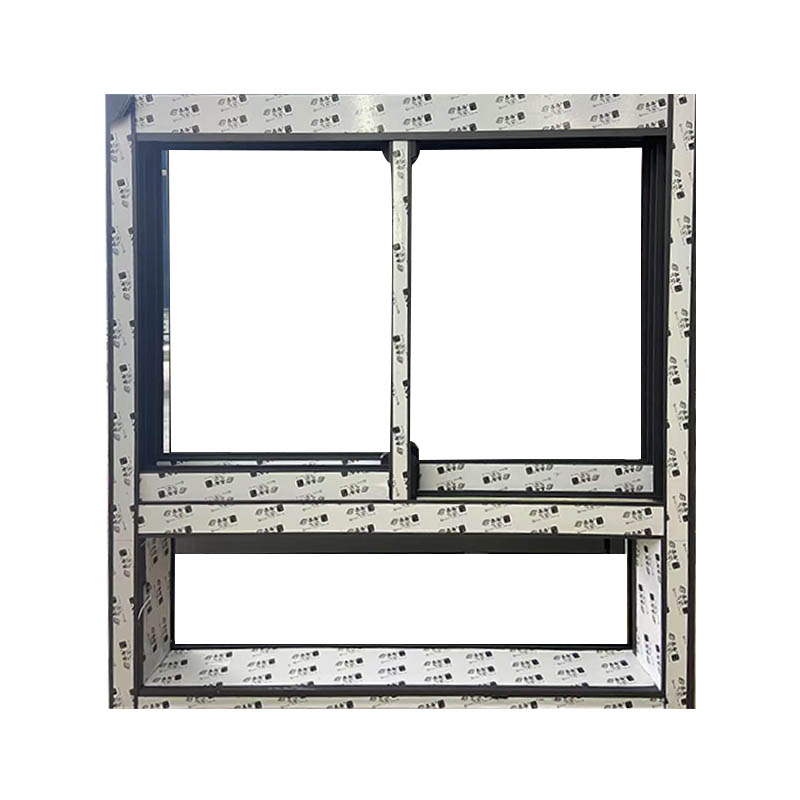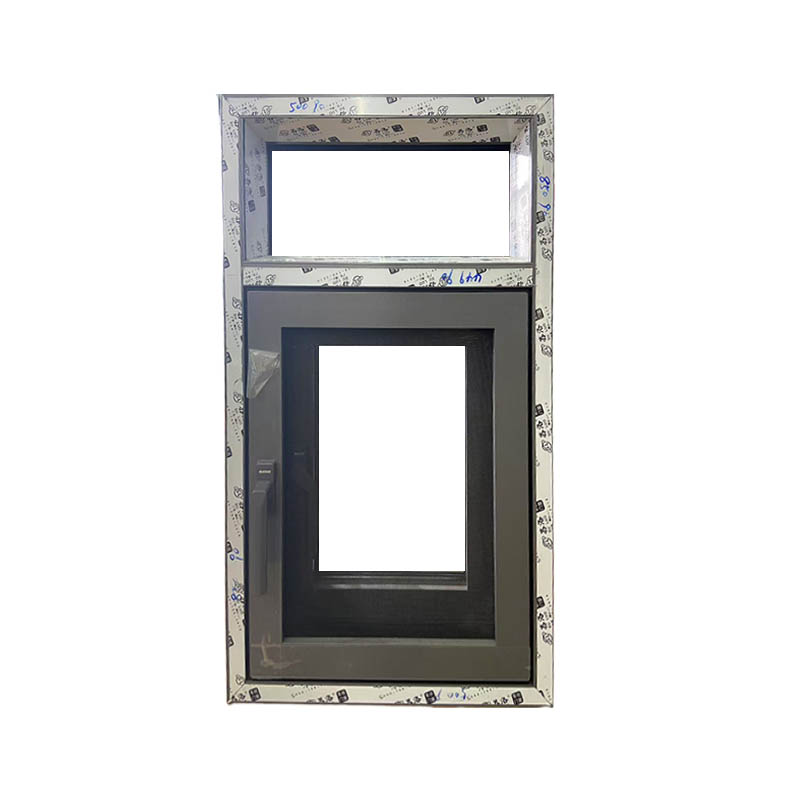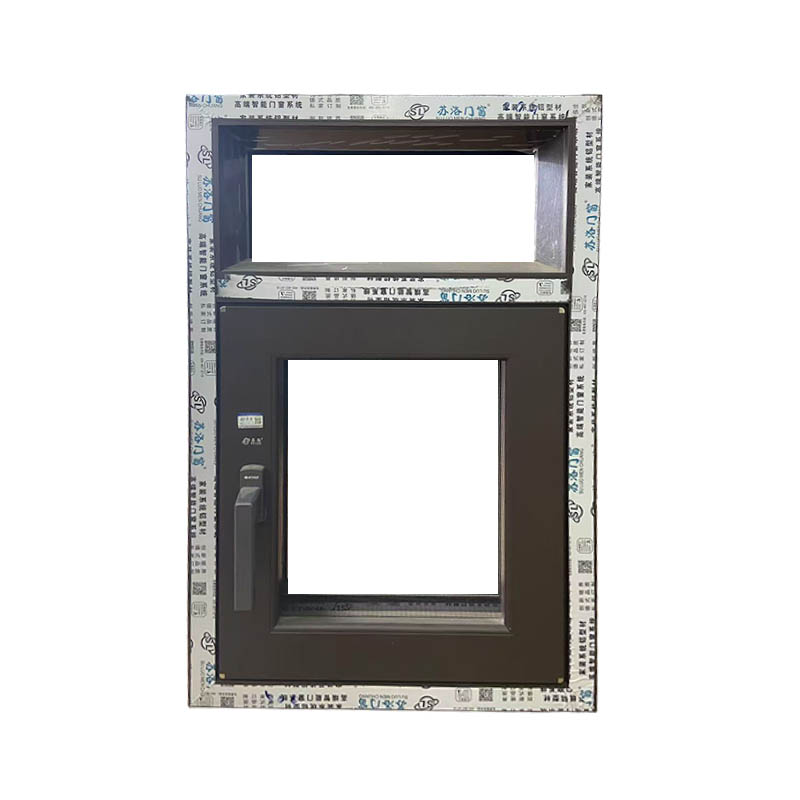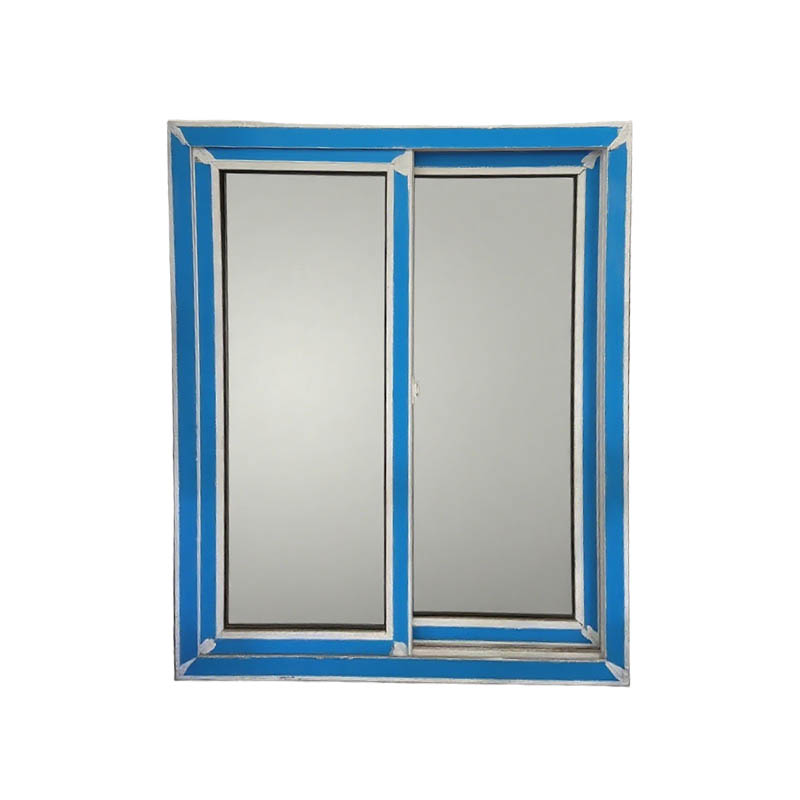How do broken bridge aluminum alloy sliding windows permanently prevent moisture and mildew?
Release Time : 2025-10-18
In the humid and rainy southern regions or high-humidity environments, doors and windows not only provide light and ventilation but also serve as the first line of defense against moisture intrusion. Traditional wooden or ordinary aluminum alloy windows, due to their poor sealing, prone to water accumulation, and weak thermal insulation, often harbor mold on the window frames, tracks, and sealing strips. This not only affects aesthetics but can also release harmful spores, endangering health. Broken bridge aluminum alloy sliding windows, with their unique structural design and material advantages, are an ideal solution for combating moisture and mildew. Through scientific material selection, precise construction, and systematic sealing, they block moisture penetration at the source, achieving true "permanent protection against moisture and mildew."
1. Broken bridge structure isolates heat and cold conduction, eliminating the root cause of condensation
The primary cause of window mold is condensation—when hot, humid outdoor air meets the cold inner surface of the window frame, moisture condenses into droplets. Long-term stagnation creates a breeding ground for mold. Ordinary aluminum alloy has high thermal conductivity, and in winter, the indoor window frame temperature can fall far below the dew point, making condensation very likely to form. However, broken-bridge aluminum alloy windows incorporate high-strength polyamide insulation strips between the inner and outer aluminum profiles, creating a "thermal bridge" that significantly reduces the thermal conductivity. This keeps the inner surface temperature of the window frame closer to room temperature, effectively preventing condensation and eliminating the source of moisture that can foster mold growth.
2. a multi-layer sealing system creates a comprehensive moisture barrier.
Broken-bridge aluminum alloy sliding windows typically utilize a three- or even four-layer sealing design: an outer windproof sealing strip blocks rainwater intrusion; a central isobaric chamber balances air pressure, directing any infiltrating rainwater through drain holes; and an inner main sealing strip tightly isolates indoor moisture from escaping and infiltrating. All sealing strips are made of EPDM rubber, which offers excellent weather resistance, aging resistance, and elasticity. They maintain a soft, sealing seal even in temperatures ranging from -50°C to +120°C, and are resistant to hardening and cracking. This "combination of loosening and blocking, layered defense" sealing system ensures long-term dryness within the track and cavity, eliminating the risk of mold.
3. Scientific drainage design eliminates dead spots where water accumulates
Sliding window tracks are prone to water accumulation and are a high-risk area for mold. High-quality thermally insulated sliding windows feature a hidden drainage system in the lower track: multiple inclined drainage holes at the bottom of the track, combined with a windproof cover, ensure smooth drainage while preventing rainwater backflow. Some high-end products also feature a raised rail design, allowing the sash pulley to suspend above the gutter. Even small amounts of accumulated water will not contact the bottom of the sash, preventing long-term soaking of the aluminum. Furthermore, the internal structure of the profile cavity is smooth and free of dead spots, eliminating spaces where dirt and water can accumulate, further reducing the risk of moisture entrapment.
4. Surface treatment enhances corrosion and antibacterial properties
The surface of thermally insulated aluminum alloy profiles is typically treated with anodizing, electrophoretic coating, or powder coating, creating a dense protective film that not only provides long-lasting color and scratch resistance, but also effectively resists corrosion from acid rain, salt spray, and other corrosion factors. Some high-end products also incorporate nano-antimicrobial agents into their coatings or utilize photocatalyst technology to inhibit the attachment and growth of mold spores on the window frame surface, achieving active mold prevention. Even in high-humidity areas like bathrooms and kitchens, the window frame remains pristine and pristine, ensuring long-term use.
5. Insulated Low-E Glass Enhances Overall Moisture-Proofing Performance
Broken-bridge windows typically feature double or triple-layered insulating glass. The interlayer is filled with dry air or argon, and a high-efficiency molecular sieve desiccant is added to completely isolate the glass from condensation. Adding Low-E coating further reduces heat exchange between indoor and outdoor, stabilizes the window temperature, and works in conjunction with the insulated structure to suppress condensation. A double layer of sealant is used between the glass and the profile to ensure a long-term dry interlayer, eliminating the common moisture-related problem of glass fogging.
Broken-bridge aluminum alloy sliding windows do not rely on a single technology; instead, they utilize a synergistic system of five key components: thermal insulation, multiple sealing layers, efficient drainage, an antimicrobial surface, and insulated glass, creating a comprehensive, long-lasting moisture and mold-proofing solution. It blocks the water vapor path from a physical structure perspective and inhibits mold growth from the essence of the material, truly achieving "one-time installation, long-term worry-free".
1. Broken bridge structure isolates heat and cold conduction, eliminating the root cause of condensation
The primary cause of window mold is condensation—when hot, humid outdoor air meets the cold inner surface of the window frame, moisture condenses into droplets. Long-term stagnation creates a breeding ground for mold. Ordinary aluminum alloy has high thermal conductivity, and in winter, the indoor window frame temperature can fall far below the dew point, making condensation very likely to form. However, broken-bridge aluminum alloy windows incorporate high-strength polyamide insulation strips between the inner and outer aluminum profiles, creating a "thermal bridge" that significantly reduces the thermal conductivity. This keeps the inner surface temperature of the window frame closer to room temperature, effectively preventing condensation and eliminating the source of moisture that can foster mold growth.
2. a multi-layer sealing system creates a comprehensive moisture barrier.
Broken-bridge aluminum alloy sliding windows typically utilize a three- or even four-layer sealing design: an outer windproof sealing strip blocks rainwater intrusion; a central isobaric chamber balances air pressure, directing any infiltrating rainwater through drain holes; and an inner main sealing strip tightly isolates indoor moisture from escaping and infiltrating. All sealing strips are made of EPDM rubber, which offers excellent weather resistance, aging resistance, and elasticity. They maintain a soft, sealing seal even in temperatures ranging from -50°C to +120°C, and are resistant to hardening and cracking. This "combination of loosening and blocking, layered defense" sealing system ensures long-term dryness within the track and cavity, eliminating the risk of mold.
3. Scientific drainage design eliminates dead spots where water accumulates
Sliding window tracks are prone to water accumulation and are a high-risk area for mold. High-quality thermally insulated sliding windows feature a hidden drainage system in the lower track: multiple inclined drainage holes at the bottom of the track, combined with a windproof cover, ensure smooth drainage while preventing rainwater backflow. Some high-end products also feature a raised rail design, allowing the sash pulley to suspend above the gutter. Even small amounts of accumulated water will not contact the bottom of the sash, preventing long-term soaking of the aluminum. Furthermore, the internal structure of the profile cavity is smooth and free of dead spots, eliminating spaces where dirt and water can accumulate, further reducing the risk of moisture entrapment.
4. Surface treatment enhances corrosion and antibacterial properties
The surface of thermally insulated aluminum alloy profiles is typically treated with anodizing, electrophoretic coating, or powder coating, creating a dense protective film that not only provides long-lasting color and scratch resistance, but also effectively resists corrosion from acid rain, salt spray, and other corrosion factors. Some high-end products also incorporate nano-antimicrobial agents into their coatings or utilize photocatalyst technology to inhibit the attachment and growth of mold spores on the window frame surface, achieving active mold prevention. Even in high-humidity areas like bathrooms and kitchens, the window frame remains pristine and pristine, ensuring long-term use.
5. Insulated Low-E Glass Enhances Overall Moisture-Proofing Performance
Broken-bridge windows typically feature double or triple-layered insulating glass. The interlayer is filled with dry air or argon, and a high-efficiency molecular sieve desiccant is added to completely isolate the glass from condensation. Adding Low-E coating further reduces heat exchange between indoor and outdoor, stabilizes the window temperature, and works in conjunction with the insulated structure to suppress condensation. A double layer of sealant is used between the glass and the profile to ensure a long-term dry interlayer, eliminating the common moisture-related problem of glass fogging.
Broken-bridge aluminum alloy sliding windows do not rely on a single technology; instead, they utilize a synergistic system of five key components: thermal insulation, multiple sealing layers, efficient drainage, an antimicrobial surface, and insulated glass, creating a comprehensive, long-lasting moisture and mold-proofing solution. It blocks the water vapor path from a physical structure perspective and inhibits mold growth from the essence of the material, truly achieving "one-time installation, long-term worry-free".







